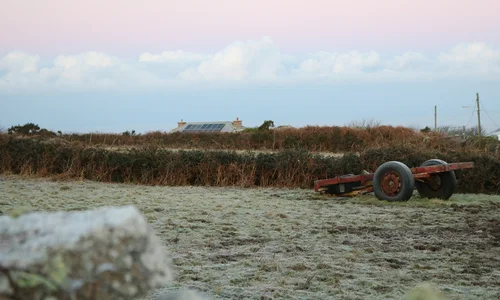 This blog supports the podcast produced for the Penwith Landscape Partnership by James Daniel of Precision Grazing and has recently been uploaded to our social media feed and Precision Grazing YouTube Channel - you can view it by clicking here. This spring has been a cold and dry time for farmers in our area. This has led to slow grass growth and the need to plan grazing for the coming season. James reminds us that it is important to supply the right quantity and quality of grass at the right time. A cold dry April has led to a drop in grass growth that may be leading to a shortage of grass to feed to stock and/or a delay in turnout, which will require buffer feeding to make up the difference.
This blog supports the podcast produced for the Penwith Landscape Partnership by James Daniel of Precision Grazing and has recently been uploaded to our social media feed and Precision Grazing YouTube Channel - you can view it by clicking here. This spring has been a cold and dry time for farmers in our area. This has led to slow grass growth and the need to plan grazing for the coming season. James reminds us that it is important to supply the right quantity and quality of grass at the right time. A cold dry April has led to a drop in grass growth that may be leading to a shortage of grass to feed to stock and/or a delay in turnout, which will require buffer feeding to make up the difference.
At this time of year, the priority is to ensure that lactating animals of all grazing species reach peak production to ensure plenty of milk for growing lambs and suckler calves and to ensure dairy cow have an enduring lactation. Once young stock are weaned it is important to improve body condition score (BCS) to improve the chances of successful mating later in the year.
Grass normally grows at 5 degrees centigrade and clover at 8 degrees centigrade for much of the early spring soil temperatures have only been at or just above this level leading to restricted pasture dry matter levels (DM) kg/ha.
Click here to download the slideshow which supports our podcast.



